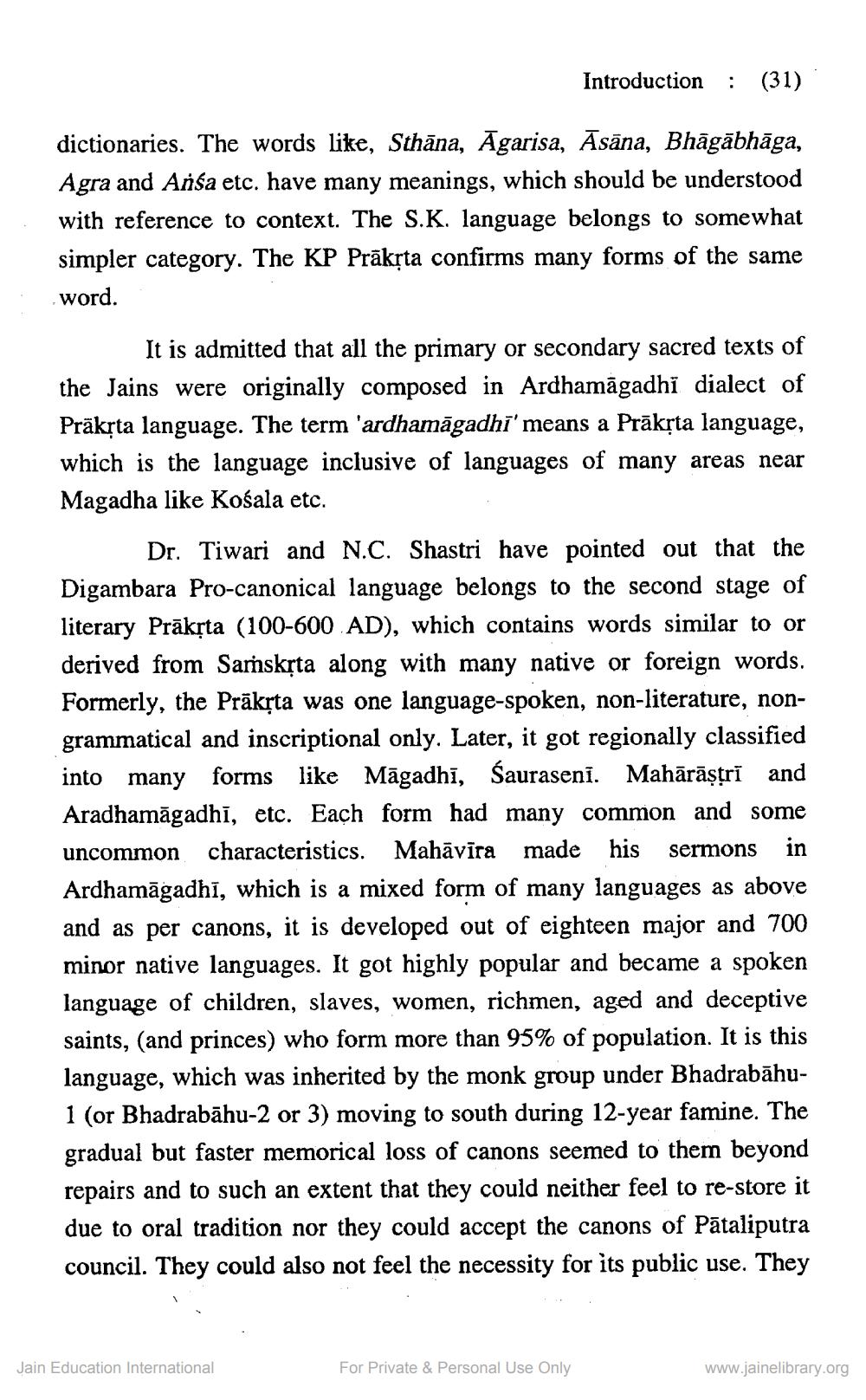________________
Introduction
:
(31)
dictionaries. The words like, Sthāna, Āgarisa, Āsāna, Bhāgābhāga, Agra and Ansa etc. have many meanings, which should be understood with reference to context. The S.K. language belongs to somewhat simpler category. The KP Prākṣta confirms many forms of the same word.
It is admitted that all the primary or secondary sacred texts of the Jains were originally composed in Ardhamāgadhĩ dialect of Präksta language. The term 'ardhamāgadhi' means a Prāksta language, which is the language inclusive of languages of many areas near Magadha like Kosala etc.
Dr. Tiwari and N.C. Shastri have pointed out that the Digambara Pro-canonical language belongs to the second stage of literary Prāksta (100-600 AD), which contains words similar to or derived from Saṁskṛta along with many native or foreign words. Formerly, the Prāksta was one language-spoken, non-literature, nongrammatical and inscriptional only. Later, it got regionally classified into many forms like Māgadhī, Śauraseni. Mahārāştri and Aradhamāgadhī, etc. Each form had many common and some uncommon characteristics. Mahāvīra made his sermons in Ardhamāgadhī, which is a mixed form of many languages as above and as per canons, it is developed out of eighteen major and 700 minor native languages. It got highly popular and became a spoken language of children, slaves, women, richmen, aged and deceptive saints, (and princes) who form more than 95% of population. It is this language, which was inherited by the monk group under Bhadrabāhu1 (or Bhadrabāhu-2 or 3) moving to south during 12-year famine. The gradual but faster memorical loss of canons seemed to them beyond repairs and to such an extent that they could neither feel to re-store it due to oral tradition nor they could accept the canons of Pātaliputra council. They could also not feel the necessity for its public use. They
Jain Education International
For Private & Personal Use Only
www.jainelibrary.org




